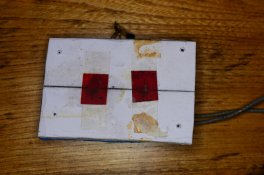I have never owned so many old cameras before (I now have five). As I've been growing my collection, I avoided deals where a camera required a CLA, i.e. something was obviously off, like a sticky shutter or lenses with fungus and haze..
All my cameras are fully operational and I sort of adopted "no CLA needed unless something is wrong" approach, but recently I realized that's not how I treat used cars, for example. With cars, you do some preventive maintenance, especially if you just bought one, to avoid problems in the future.
On one hand, the used car analogy makes sense, on the other hand cars are designed to be maintained and maintenance is a part of a user manual. I do not see cameras be designed to be frequently opened up, and repair/maintenance manuals aren't even included and historically have only been available to authorized repair centers.
I also do not know what the original design parameters were. Did Rolleiflex engineers really expect their cameras to be fully functional 60 years later?
So... on a spectrum from "if it ain't broke don't fix it" to having a list of regular maintenance items every N years, what's your approach to CLA and camera maintenance in general?
All my cameras are fully operational and I sort of adopted "no CLA needed unless something is wrong" approach, but recently I realized that's not how I treat used cars, for example. With cars, you do some preventive maintenance, especially if you just bought one, to avoid problems in the future.
On one hand, the used car analogy makes sense, on the other hand cars are designed to be maintained and maintenance is a part of a user manual. I do not see cameras be designed to be frequently opened up, and repair/maintenance manuals aren't even included and historically have only been available to authorized repair centers.
I also do not know what the original design parameters were. Did Rolleiflex engineers really expect their cameras to be fully functional 60 years later?
So... on a spectrum from "if it ain't broke don't fix it" to having a list of regular maintenance items every N years, what's your approach to CLA and camera maintenance in general?
Last edited:


















